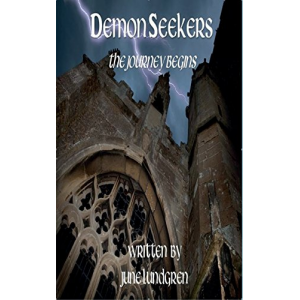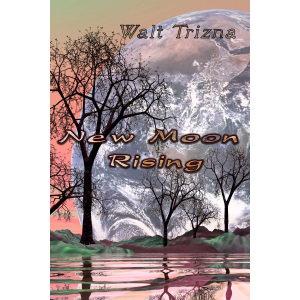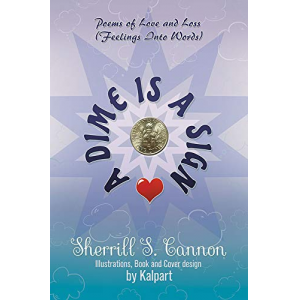- Author
- Book
- Story behind the book
- Media Links
- Reviews

A. Knighton Stanley
About
Alfred Knighton Stanley was born in the village ofDudley, in the County of Wayne in the state of North Carolina in 1937. Dr.Stanley is the youngest of 5 children born to Joseph Taylor Stanley and KathrynTurrentine Stanley. Rev. Dr. Joseph T. Stanley who at the time of Knighton’sbirth was pastor of First Congregational Church in Dudley, the oldest AfricanAmerican church of the Congregational tradition in North Carolina, was at thesame time on special assignment on behalf of the Board of Homeland Missions ofthe Congregational Christian Churches. His assignment was to assist with churchdevelopment with “Negro” Congregational Christian Churches in rural areas andsmall towns in eastern North Carolina and Virginia. Kathryn T. Stanley,Knighton’s Mother, was the daughter of a Congregational pastor in Athens,Alabama, a graduate of Knoxville College and the first African American womanto be licensed to serve churches in the Southeast District of the Congregationaldenomination.
In1943, when Knighton was six years old, the Stanley’s moved to Greensboro, NorthCarolina. This was during World War II. J.T. Stanley had been selected asSuperintendent (Conference Minister) of African American CongregationalChristian Churches in an area which stretched from Norfolk, Virginia to CorpusChristie, Texas. Knighton, who was best known as Tony, was educated in thePublic Schools of Greensboro. He attended Washington Street Elementary andGrammar Schools, Lincoln Junior High School and graduated from Dudley HighSchool in 1955. While a student at Dudley High School Knighton was an honorstudent and a leading actor in the Dudley Thespians, the schools drama group.He appeared in such plays as “Lamb in the Window,” “Withering Heights,” and“You Can’t Take It With You.”
Fromthe time he was nine years old, Knighton always had a “job” of some kind oranother. He sold turnip greens at 2 pounds for a quarter; mowed lawns with apush mover; sold newspapers (Journal and Guide, Greensboro Daily News andGreensboro News Record); washed windows; and worked at Dixie Super Market,first as delivery and stock “boy” and finally as a cashier, Dixie was whiteowned and it was unusual. In the 1950’s and before for Southern whites to let aperson of color handle “their” money. Knighton’s affiliations growing up inGreensboro included the Hayes-Taylor YMCA, Windsor Community Center and theYouth Chapter of the NAACP. He was a member of First Congregational Church andlater joined St. Stephens Congregational Christian Church under Rev, F.A.Hargett.
AtSt. Stephens he started a unit of The Pilgrim Fellowship for youth and attendedthe national meeting of Pilgrim Fellowship at Yale Divinity School in 1953 andat Doane College in Crete, Nebraska in 1955. When Knighton was in Junior HighSchool he faithfully attended the Sunday Evening Vespers at Bennett College.Through this experience he developed an affinity for orderly worship, classicalanthems and great speeches. He heard some of the best speakers of the time,speakers such as Benjamin E. Mays, Mary Mc Cleod Bethune, Howard Thurmond,Eleanor Roosevelt, Roy Wilkins and Mordecai Johnson. Benjamin Mays, who he gotto know as a friend and mentor later in life, was his favorite speaker.Knightons’ speaking voice and demeanor are akin to those of Dr. Mays.
Upongraduation from high school Knighton matriculated at Talladega College inTalladega, Alabama. While at Talladega he became a member of the Alpha BetaChapter of the Alpha Phi Alpha Fraternity and the Talladega College LittleTheatre. He ranked number one on the battery of entrance exams administered bythe college and was on the Dean’s List during the entirety of hismatriculation.
Asa member of the Little Theatre, Knighton had major roles in “The Crucible,”“J.B-,” “Land Beyond the River,” and other productions. He became President ofhis fraternity and the Little Theatre. He traveled with the Little Theatre toSavannah, Georgia, Greensville and Charleston, South Carolina, Detroit, Michigan,Chicago, Illinois, Indianapolis, Indiana and Cincinnati, Ohio. He became notedas a “Youth Day Speaker” in churches in central Alabama and frequently visitedMontgomery, Alabama where he met Dr. Martin Luther King and participated in theMontgomery Civil Rights Movement.
Dr.King was a frequent visitor at Talladega College during Knighton’s tenure andKnighton was a member of the Fraternity committee that sponsored an event,which brought Martin Luther King and Andrew Young together for their very firstmeeting. During his sophomore, junior and senior years he served as studentmanager of Stone Hall, the Freshman Men’s Dormitory.
Hiscollege majors were Psychology and Religion. His Senior Thesis was the“Soteriological Doctrine of Paul J. Tillich.” He graduated in 1959 with honorsand was selected as a Woodrow Wilson Fellow and Fund for Theological EducationFellow.
Inthe spring of 1959 he was admitted to Yale Divinity School and began hisprofessional studies in the fall of the same year. His major field was Religionin Higher Education and his favorite professors were James Gustafson, H.Richard Neibuhur, John Oliver Nelson, Gayland B. Norse and Oauie Napier. Hisfield experience was done at Bunker Hill Congregational Church in Waterbury,Connecticut, Wider City Parish in New Haven, Connecticut, and Dwight Hall, thecampus ministry program of the University.
Duringthe summers of 1960 and 1961 he interned at Central Congregational UnitedChurch of Christ in New Orleans, Louisiana. He was selected to do an Honorsproject his final year at Yale at which time he researched and wrote a majoressay on “Congregationalism Among Negroes in the South.”
Itwas near the end of the first semester of his second year at Yale that Knightonfelt compelled to take leave from Divinity School so he could participate inthe student led phase of the Civil Rights Movement in the South. When he soughtthe counsel of Professor Gustafson regarding this matter, he was advised thatthere would be enough of the Civil Rights revolution remaining upon graduationfor him to find adequate opportunity for participation.
Theprofessor was right, for upon his graduation from Yale Divinity School in 1962,Knighton was selected to be Director of the United Southern ChristianFellowship Foundation at North Carolina Agricultural and Technical Universityin Greensboro, North Carolina, the birthplace of the student sit-ins in 1960.Samuel Dewitt Proctor, who served as Deputy Director of Peace Corp underSargent Shriver was President of A&T at that time. Stanley was not long atNorth Carolina A&T University before students sought him out to be theadvisor for the Greensboro Chapter of the Congress of Racial Equality.
Thesecond phase of the Greensboro Sit-In Movement was in the spring of 1963. Thiswas a phase of mass demonstrations with 200 or 300 participating in marcheseach evening. The vast majority of the participants were young women fromBennett College. These women had the support of their College President, Dr.Willa B. Player. At one point in time during the late spring of 1963, allavailable spaces in every jail in Guilford County had been taken by studentsarrested in the movement so the Greensboro Coliseum and an abandoned poliohospital had to be used to accommodate the overflow.
JessieJackson was a student in his senior year at A&T College second semester of1963. Out of respect for the college administration, he had not been active inthe student movement. He feared the State of North Carolina would dealpunitively with the college and its administrators if students persisted withthe movement. But when most of the faithful had already been jailed, it becameapparent that if the struggle were to continue it needed a person of sufficientpopularity to recruit students who had been reluctant to join in the protests.
Itwas concluded that Jessie Jackson was that person. Knighton Stanley was chosento recruit him. His efforts at recruitment being very successful, Jessie soonbecame a new leader and spokesperson in the movement. It was Knighton whoassisted Jessie in being admitted to Chicago Theological Seminary. In Chicago,Jessie eventually became head of Operation Bread Basket on behalf of Dr. MartinLuther King. The rest is history. The student demonstrations in Greensboro weresuccessful and most public accommodations were opened there by the fall of1963.
InJune 1964, Knighton Stanley married Beatrice Alice Perry whom he had met duringhis summer internship at Central Congregational United Church of Christ in NewOrleans. Beatrice entered her senior year at Bennett College in the Fall of1964. Dr. Player, President of Bennett College, asked Knigthon to join herstaff as Director of Religious Life and an instructor in the Social ScienceDivision of the college.
Inaddition to presiding over the chapel, developing religious programs andcounseling students, he also taught Social Psychology, World Civilizations,World Religions, and Old and New Testaments. In the Summer of 1965 PresidentPlayer asked him to serve on the staff of the Arts & Humanities Institutefor high school seniors.
WhenDr. Player announced her resignation as college President in December, 1965effective June, 1966 so she could assume responsibility for Title VI Programsof the U.S. Department of Education, Knighton resigned and left Bennett Collegein January, 1966 because his loyalty had ultimately been to Ms. Player.
InFebruary, 1966, A. Knighton Stanley became Associate Minister of PlymouthCongregational United Church of Christ in Detroit, Michigan. Rev. NicholasHood, the Senior Pastor had been elected to the Detroit City Council and neededstrong staff support. In this capacity Stanley administered the church,participated in its Housing Ministry, conducted worship, preached and directedthe church’s Junior High Youth Ministry.
WhenStanley was in Detroit, he was approached by Peoples Congregational UnitedChurch of Christ about Candidacy for Senior Minister. Stanley felt that sincehe had only recently come to Plymouth Church in Detroit, he should not considera new position. He had already turned down an offer to consider the Presidencyof Palmer Memorial Institute in Sedalia, N.C. founded by Dr. Charlotte HawkinsBrown.
TheSearch Committee for Peoples Church in Washington persisted in approachingKnighton about considering him. So he offered himself as a candidate for theposition and was called to begin service in February, 1968. Prior to arrival inWashington, Knighton and Beatrice had become the proud parents of NathanielTaylor Stanley (1965) and Kathryn Velma Stanley (1966). The couple was wellreceived by the congregation and Stanley began a ministry which spanned nearly39 years.
Stanley’sministry at Peoples Church was preceded by that of Arthur Fletcher Elms whodistinguished himself as pastor of Peoples Church for 37 years. Dr. Elms was anative of Antigua, West Indies, and a graduate of Howard University inWashington, D.C. Dr. Elms died in 1964. He was succeeded by Grady Poulard, aYale Divinity School graduate. The relationship did not last long, so in 1966the church was looking for a pastor again.
Itwas Reverend Elm’s vision that the church should have an “educational building”to accommodate its various programs for children, youth and families. He didnot live to see his vision become a reality. When Stanley came to PeoplesChurch, the church felt confident that it could fulfill Rev. Elm’s dream and sounder Stanley’s leadership, they broke ground for a new educational unit in theearly summer of 1968.
Priorto the building of the new educational building, Peoples Church had only onebuilding. The sanctuary was on the second floor. One had to climb a full flightof exterior or interior steps to enter it. There were two anterooms on thisfloor, one of which was used as the pastor’s office, the other as a “counting”room for the Board of Trustees. On the first level there was an auditorium inwhich makeshift dividers were used to provide spaces for Sunday School classes.
UnderStanley’s leadership, not only was the educational building (Elms Center)completed, but five parcels of land were acquired and a new architecturallyinnovative sanctuary was built. By 2007, when Knighton retired the church hadproperties with a 100 seat chapel, a 950 seat sanctuary, two auditoriums, afour room food pantry and clothes boutique, seven office spaces, two conferencerooms, sacristy, bridal room, a parking lot, a large courtyard and seven classrooms and an art gallery. The replacement value of property owned by the churchis approximately $25 million.
Themembership at Peoples Church grew considerably during Stanley’s ministry. In1968 there were approximately 650 members and by 2007 there were more than2,200 members,
Manynew programs were started during the Stanley years at Peoples. They include thefollowing:
- Peoples Neighborhood House—a multi-service social service agency funded by the Department of Human Services of the District of Columbia, The Gordy Foundation, and the Board of Homeland Ministries of the United Church of Christ.
- The Men’s and Women’s Golf Clubs.
- The Peoples Cultural Arts program—a program for male and female youth funded by the Kellog Foundation.
- The Peoples Jazz Vespers
- The Peoples Clothes Closet and Clothing Boutique
- Early Sunday Worship (8:30 Service)
- The Voices of Peoples—a Gospel Choir of 40 voices directed by e’ Marcus Harper, a Grammy Award nominee.
- The Peoples Day Camp—a summer day camp for children and youth.
- The Men’s Chorus
- City Wide Martin Luther King celebration for children
- The Peoples Scholarship awards –a scholarship program with a $350,000 endowment which gave scholarship to about 12 students each year.
- Student Recognition Sunday—a program which recognized the achievement of all students.
- The Leisure Group—a program for Seniors.
- The Peoples Drama Club
- The Peoples Neighborhood Federal Credit Union
- The Peoples Investment Club
- The Girl Scouts—this unit became the largest in the city.
- The Children’s Ministry
- The Lay Reader’s Guild
- Sunday Coffee Hour
- Annual Martin Luther King Celebration of Freedom and Hope
- Children’s Handbell Choir
- The Fellowship Choir
- The Women’s Chorus
- Disciple Bible Study
- The Young Adult Fellowship
- The Quilters
- The Wednesday Noon Prayer Service
- The Men’s Bible class
- The People’s Prodder
- Serendipity Bible Student and many, many other programs.
In addition to the growth in the adult membershipnoted above, more than 450 young people were confirmed into full membership ofthe church. The church membership was not monolithic. It included persons of avariety of socio-economic backgrounds who were attracted to Dr. Stanley’sleadership and preaching. He also brought a stellar group of speakers toPeoples church and Washington which included Vice President Hubert H. Humphrey,Andrew Young, Benjamin E. Mays, Samuel D. Proctor, James Baldwin, Maya Angelou,Walter Fauntroy, Edward Kennedy, Walter Washington, Eleanor Holmes Norton,Dorothy Height, Shirley Chisholm, Martin Luther King Jr, and many others. Mrs.Richard Nixon and Vice President Daniel Quayle were among noted guests of the church.
BoyScout Troop # 544 was chartered to Peoples Church prior to Stanley’s arrival.It was not only the largest Boy Scout Troop in the Nation’s capital, it becamenoted as the Troop where Eagle Scouts were made. During the last ten years ofKnighton Stanley’s tenure no fewer than four Eagle Scouts were made each year.
Inaddition to the demands of his church and professional duties, he was alsoengaged in a variety of civic and religious duties outside the church whichmade demands upon his time and gifts. He was very active in the Council ofChurches of Metropolitan Washington serving on several committees and as VicePresident. He worked with the Black Man’s Development Center to organize BOLD(Blot Out Lethal Drugs). He served on the Board of Directors of the GreaterWashington United Way. Dr. Stanley was an adjunct professor at the HowardUniversity School of Divinity and an instructor in the Urban Institute.
In1974 he was appointed by Walter E. Washington, Mayor of the District ofColumbia to be his special assistant and Director of the Office of BicentennialPrograms of the Nation’s capital. In this capacity Stanley was responsible forplanning Bicentennial Era programs for the District of Columbia which includedhosting Senators, Representatives, Governors and other dignitaries from the 50states as well as noted persons and groups such as Queen Elizabeth, ElizabethTaylor, Esther Rolle, the Russian Bolshoi Ballet, the Alvin Alley Dancers and ahost of others. Dr. Stanley received a letter of commendation and a plaque forhis service to the Nation’s Bicentennial efforts from President Gerald R. Ford.
Whilehis areas of Civic Service in the District of Columbia are too numerous tomention here, it must be noted that he served with distinction as a member ofthe Judicial Nominating Committee of the District of Columbia and Chair of theBoard of Trustees of the University of the District of Columbia. In 2005, Dr.Stanley was inducted into the District of Columbia Hall of Fame
In1974, A. Knighton Stanley was awarded the Doctor of Ministry Degree by HowardUniversity. His doctoral thesis was “Congregationalism Among Negroes in theSouth.” It was published in 1979 bythe Pilgrim Press under the title, “The Children is Crying”. A second printing of this book was done in 2007. In2008, Dr. Stanley authored another book entitled, “A View From My Window (15Sermons of Hope and Assurance),”published by Cronos Press, an imprint of Fideli Publishing. He has manypublished articles and essays to his credit.
Asan ordained minister of the United Church of Christ, A. Knighton Stanley hasserved in many capacities. He was twice a delegate to the General Synod of theUnited Church of Christ. He served as President and Vice President of Ministersfor Racial and Social Justice. He was a member of the Committee on TheologicalEducation. He was a delegate to the world alliance of Reformed Churches, NorthAmerican and Caribbean Division. He was a Board Member of the Council forChristian Social Action and the Office of Communication; a member of theCapital Funds Campaign and the New Century Hymnal Committee. He served on theBoard of Directors of the Central Atlantic Conference and the Church andMinistry Committee of the PotomAc Association.
In2007 Howard University School of Divinity established the A. Knighton StanleyLectures and in the same year Yale University Divinity School established ascholarship in his name. In 2006 he was appointed to the Yale Divinity SchoolBoard of Advisors.
A. Knighton Stanley was not unknown to the corporateworld. For twelve years he served on the Board of Directors of Minister’s Life,(an insurance company) which is now a part of Minnesota Life. In his last twoyears of service he was Chair of the Board. Additionally, for fifteen years, hewas a member of the Advisory Board of the Industrial Bank of Washington, Thelargest African American owned bank in the nation.
Dr. Stanley has traveled extensively in theCaribbean, Asia, Africa, the Middle-East, and Europe.
In 1986, A. Knighton Stanley was married to Andrea J.Young, daughter of Ambassador Andrew W. Young and Mrs. Jean child’s Young.Taylor Marie Stanley, a fourth year honor student at the University of Georgia,was born of that marriage. He and Ms. Young were divorced in 2007.
Dr. Stanley now serves as Minister for ChurchDevelopment at St. Albans Congregational United Church of Christ in St. Albans(Queens), New York. He lives on Long Island in the Village of Baldwin, NewYork.

Demon Seekers: The Journey Begins
Description
<p>Sayetta is an archangel who has been sent into the physical world to seek out eight archangels who have been reborn into the world. She knows that she cannot do it in the form of an angel so she takes on a human form to move through among us in the physical world. Gabe a mortal has the soul of a warrior angel. He is reborn in physical form to prepare for her coming. He is born with abilities that he is unaware he has.</p><p>All of his life Gabe had been having dreams of a ruined church. He never knew the name of the church, but the dream was always the same. In the dream, he was standing facing the ruins of the church. But he didn’t look like a human. Instead, he was an angel with pure white wings and a golden countenance. Another much larger angel appeared to him. The angel pointed towards what was left of the door and said “Enter, your journey has just begun and your guide awaits you.</p><p>Sayetta finds out from Archangel Michael that Lucifer has sent an old demon to find and stop Auriel from removing the demons he has imprisoned in the earth.</p><p>They receive a little help from the Archangels Azuriel and Gabriel as they journey to locate Auriel. It’s a race to find Auriel before the demon does. In the end, it’s a battle between two powerful beings, one good and one evil.</p>
Story Behind The Book
Media Links
Reviews
<p class="MsoNormal" style="margin-bottom:.25in;line-height:120%;vertical-align:middle;"><span style="font-size:14pt;font-family:'ACaslonPro-BoldItalic';color:#000000;"><strong><em>Acclaim for A View From My Window</em></strong></span><span style="font-family:'ACaslonPro-Regular';color:#000000;"></span></p><p></p> <p class="MsoNormal" style="text-align:justify;line-height:120%;vertical-align:middle;"><span style="font-family:'ACaslonPro-Regular';color:#000000;">For over 40 years, Dr. Stanley’s preaching has attempted to move a complex, sophisticated community beyond the ‘kindergarten’ Christianity of its childhood to a powerful, relevant gospel that reconciles their complex lives while affirming the simple truth that in spite of all of our shortcomings, we are all God’s beloved children. This volume illuminates a life and ministry obedient to a worthy call. </span></p><p></p> <p class="MsoNormal" align="right" style="margin-bottom:.25in;text-align:right;line-height:120%;vertical-align:middle;"><span style="font-size:10pt;font-family:'ACaslonPro-Bold';color:#000000;"><strong>Ambassador Andrew Young, <br /> Civil Rights leader/minister/humanitarian<br /> Atlanta, Georgia</strong></span></p><p></p> <p class="MsoNormal" style="text-align:justify;line-height:120%;vertical-align:middle;"><span style="font-family:'ACaslonPro-Regular';color:#000000;">One Sunday morning, Dr. Stanley preached a sermon that so illuminated an aspect of my life’s journey I wrote one of my strongest musical compositions. On the Sunday after Coretta Scott King died, through his teaching and preaching, he showed us a woman with a deep moving spirit and commitment to justice.<span> </span>I was able to cry again as we closed the service singing the spiritual, “There is a Balm in Gilead.” I have continually found inspiration and hope in his words. May you also find water in your dry times from this well.</span></p><p></p> <p class="MsoNormal" align="right" style="margin-bottom:.25in;text-align:right;line-height:120%;vertical-align:middle;"><span style="font-size:10pt;font-family:'ACaslonPro-Bold';color:#000000;"><strong>Dr. Bernice Johnson Reagon, <br /> singer/composer/cultural historian<br /> Washington, DC</strong></span></p><p></p> <p class="MsoNormal" style="text-align:justify;line-height:120%;vertical-align:middle;"><span style="font-family:'ACaslonPro-Italic';color:#000000;"><em>A View From My Window </em></span><span style="font-family:'ACaslonPro-Regular';color:#000000;">is a refreshing, unassuming collection of a preacher’s thoughts and reflections about God and who we are as God’s children. Tony Stanley has a unique gift of sharing experiences of life through the lens of God’s love, mercy and faithfulness to all people. While reading his sermons, one feels as if one is reading over his shoulder as he journals about his life, ministry and how God’s love overshadows every nuance of what we do. Stanley has a gift of making the most mundane occurrence appear in reflection as a great epiphany in him. This book is a must read for every preacher and especially seminarians.</span></p><p></p> <p class="MsoNormal" align="right" style="margin-bottom:9pt;text-align:right;line-height:120%;vertical-align:middle;"><span style="font-size:10pt;font-family:'ACaslonPro-Bold';color:#000000;"><strong>The Reverend Dr. Susan D. Newman, Author,<br /><span> </span></strong></span><span style="font-size:10pt;font-family:'ACaslonPro-BoldItalic';color:#000000;"><strong><em>Your Inner Eve: Discovering God’s Woman Within</em></strong></span></p><p></p> <p class="MsoNormal" align="right" style="margin-top:0in;margin-right:.5in;margin-bottom:9pt;margin-left:0in;text-align:right;line-height:120%;vertical-align:middle;"><span style="font-size:10pt;font-family:'Caslon540BT-Roman';color:#000000;"> </span></p><p></p> <p class="MsoNormal" style="text-align:justify;line-height:120%;vertical-align:middle;"><span style="font-family:'ACaslonPro-Regular';color:#000000;">This volume of sermons by Dr. A. Knighton Stanley is inspiring and instructive for laity and preachers alike. His evocative weaving of solid theological scholarship, illustrations from daily life and his personal faith journey create a tapestry that compellingly presents the hope and joy of the good news. Taking a view from his window is to see the fullness of God’s majesty.</span></p><p></p> <p class="MsoNormal" align="right" style="text-align:right;line-height:120%;vertical-align:middle;"><span style="font-size:10pt;font-family:'ACaslonPro-Bold';color:#000000;"><strong>The Reverend Dr. Henry T. Simmons, Senior Minister</strong></span></p><p></p> <p class="MsoNormal" align="right" style="text-align:right;line-height:120%;vertical-align:middle;"><span style="font-size:10pt;font-family:'ACaslonPro-Bold';color:#000000;"><strong>St. Albans Congregational Church</strong></span></p><p></p> <p class="MsoNormal" align="right" style="margin-bottom:.25in;text-align:right;line-height:120%;vertical-align:middle;"><span style="font-size:10pt;font-family:'ACaslonPro-Bold';color:#000000;"><strong>St. Albans, New York</strong></span></p><p></p> <p class="MsoNormal" style="text-align:justify;line-height:120%;vertical-align:middle;"><span style="font-family:'ACaslonPro-Regular';color:#000000;">A. Knighton Stanley’s earlier book, </span><span style="font-family:'ACaslonPro-Italic';color:#000000;"><em>The Children Is Crying </em></span><span style="font-family:'ACaslonPro-Regular';color:#000000;">(1979), addresses the American Missionary Association and the Congregational Church’s blatant disregard for the rich and meaningful culture already existent among Afro Americans in the South following the Civil War and suggests that because of their failure to establish culturally relevant churches throughout the South, “The children, black and white are crying everyday.”<span> </span>It is entirely providential, therefore, that this sensitive pastor/scholar/preacher now shares with us thought provoking sermons that provide words of hope and encouragement so that we may cease our crying and more faithfully be the Body of Christ.</span></p><p></p> <p class="MsoNormal" align="right" style="text-align:right;line-height:120%;vertical-align:middle;"><span style="font-size:10pt;font-family:'ACaslonPro-Bold';color:#000000;"><strong>The Reverend Dr. Marvin L. Morgan</strong></span></p><p></p> <p class="MsoNormal" align="right" style="text-align:right;line-height:120%;vertical-align:middle;"><span style="font-size:10pt;font-family:'ACaslonPro-Bold';color:#000000;"><strong>Moderator, General Synod 27 </strong></span></p><p></p> <p class="MsoNormal" align="right" style="margin-bottom:.25in;text-align:right;line-height:120%;vertical-align:middle;"><span style="font-size:10pt;font-family:'ACaslonPro-Bold';color:#000000;"><strong>United Church of Christ<span> </span></strong></span></p><p></p> <p class="MsoNormal" style="text-align:justify;line-height:120%;vertical-align:middle;"><span style="font-family:'ACaslonPro-Regular';color:#000000;">Dr. Stanley is passionate in his love for God and his service toward God’s people.<span> </span>I so appreciate his openness and candor about his struggles as he continues to know and live the ways of God.<span> </span>This collection of sermons offers a glimpse into the life and soul of a preacher on his journey toward the heart of God. </span></p><p></p> <p class="MsoNormal" align="right" style="text-align:right;line-height:120%;vertical-align:middle;"><span style="font-size:10pt;font-family:'ACaslonPro-Bold';color:#000000;"><strong>The Reverend Natalie V. McLean, Chaplain</strong></span></p><p></p> <p class="MsoNormal" align="right" style="text-align:right;line-height:120%;vertical-align:middle;"><span style="font-size:10pt;font-family:'ACaslonPro-Bold';color:#000000;"><strong>Bennett College for Women</strong></span></p><p></p> <p class="MsoNormal" align="right" style="margin-bottom:9pt;text-align:right;line-height:120%;vertical-align:middle;"><span style="font-size:10pt;font-family:'ACaslonPro-Bold';color:#000000;"><strong>Greensboro, NC</strong></span></p><p></p>






